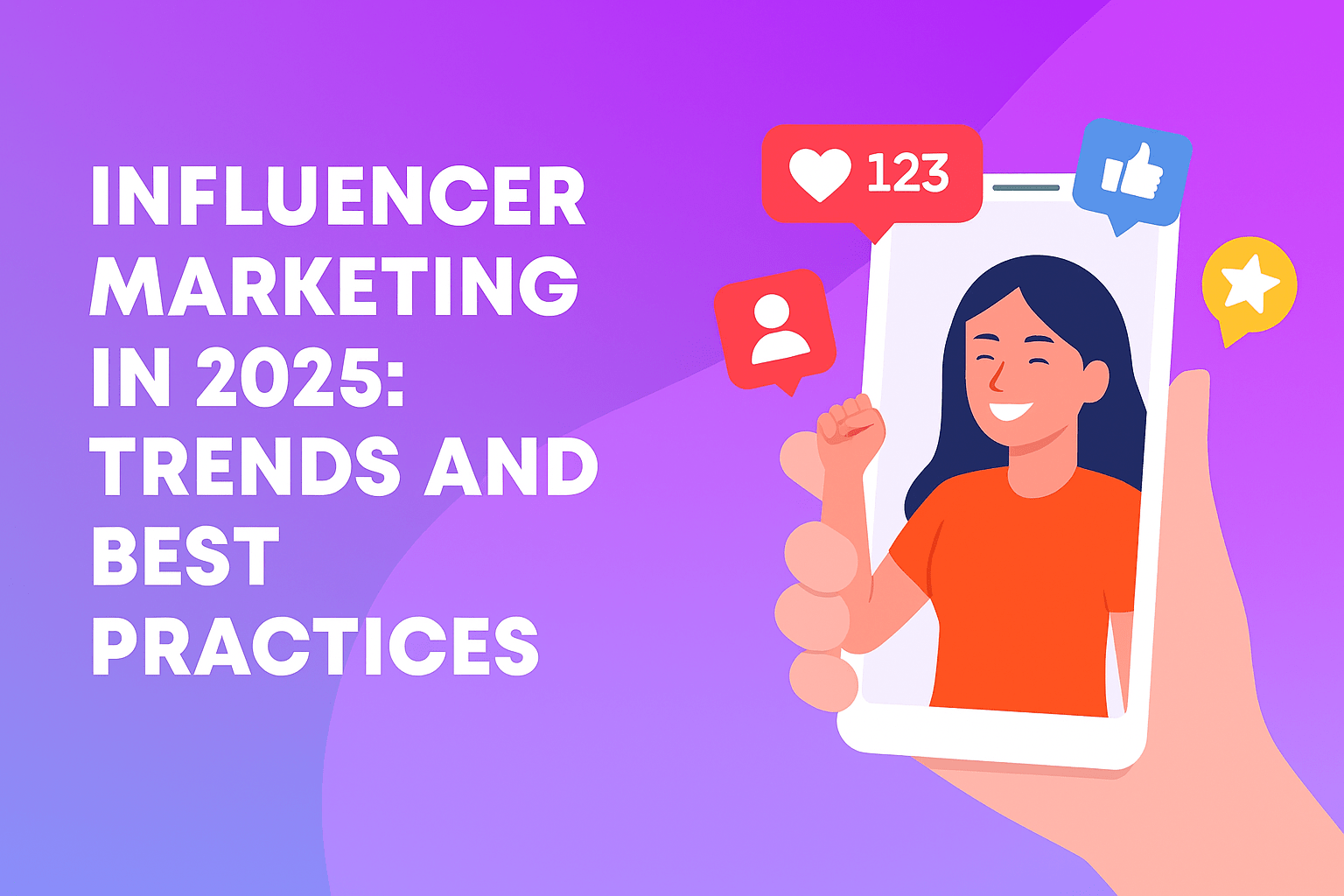Influencer Marketing in 2025: Trends and Best Practices

Influencer Marketing in 2025 has evolved into one of the most powerful digital marketing strategies for brands worldwide. As consumer behavior shifts and technology transforms how people engage with content, businesses are leveraging influencers to create trust, drive conversions, and strengthen brand presence across social platforms.
Unlike traditional advertising, influencer marketing focuses on authentic connections between creators and audiences. In 2025, the industry is worth billions, with micro-influencers, AI-powered campaigns, and niche communities shaping how brands connect with customers.
In this article, we’ll explore influencer marketing in 2025, its key trends, and the best practices every business must adopt to maximize ROI.
Why Influencer Marketing in 2025 Matters
Building Authentic Connections
Consumers in 2025 demand authenticity. Influencer marketing enables brands to tap into genuine relationships influencers have with their followers. Instead of one-way advertising, influencer collaborations spark two-way conversations that build trust.
Rising Consumer Trust in Influencers
Surveys reveal that people are more likely to purchase products recommended by influencers than by celebrities or brands themselves. This makes influencer marketing in 2025 a critical growth tool for businesses of all sizes.
Global Market Growth
By 2025, the influencer marketing industry is projected to surpass $24 billion, driven by social commerce, short-form video platforms, and AI-enhanced personalization. Brands that embrace this shift can capture global markets faster than traditional marketing methods.
Key Trends in Influencer Marketing 2025
1. Rise of Micro and Nano Influencers
In 2025, micro-influencers (10k–100k followers) and nano-influencers (1k–10k followers) dominate campaigns. They drive higher engagement rates than celebrity influencers due to their loyal and niche audiences. Brands are partnering with them for cost-effective yet impactful campaigns.
2. AI and Data-Driven Influencer Selection
Artificial Intelligence (AI) is revolutionizing influencer discovery and campaign measurement. Marketers now use AI tools to:
-
Identify the right influencers based on engagement, not just followers.
-
Predict ROI before launching campaigns.
-
Track real-time performance across multiple platforms.
3. Social Commerce Integration
Platforms like Instagram, TikTok, and YouTube have transformed into shopping hubs. Influencer content now includes direct shopping links, AR try-ons, and live selling, making influencer marketing a core driver of e-commerce sales.
4. Long-Term Partnerships Over One-Off Campaigns
Brands are moving away from one-time influencer posts and focusing on long-term collaborations. This strategy builds stronger brand loyalty, enhances trust, and improves campaign effectiveness.
5. Authentic, Unfiltered Content
Audiences in 2025 value raw, unedited, behind-the-scenes content over polished, overly curated posts. Influencers are shifting towards storytelling that feels real, increasing relatability and consumer trust.
6. Cross-Platform Influencer Strategies
Instead of focusing on one platform, influencers are active across Instagram Reels, TikTok, YouTube Shorts, and even LinkedIn for B2B campaigns. Brands must adopt a multi-channel influencer marketing strategy in 2025 to reach wider audiences.
7. Regulation and Transparency
With growing scrutiny, governments have enforced stricter disclosure laws. Influencers must clearly mark sponsored posts, ensuring transparency. Brands need to comply with these regulations to maintain credibility.
Best Practices for Influencer Marketing in 2025
1. Define Clear Campaign Goals
Before investing in influencer marketing, brands must set clear objectives:
-
Boost brand awareness
-
Drive product sales
-
Increase website traffic
-
Strengthen customer loyalty
2. Choose the Right Influencers
Not every influencer is right for every campaign. Best practices for influencer marketing in 2025 include:
-
Evaluating engagement rates
-
Checking audience demographics
-
Ensuring influencer values align with brand identity
3. Focus on Long-Term Collaborations
Sustainable influencer marketing requires building lasting relationships. Partnering with influencers over time develops authentic brand storytelling that resonates with audiences.
4. Embrace AI-Powered Tools
From influencer discovery to campaign analytics, AI tools in 2025 help optimize performance, prevent fraud, and maximize ROI.
5. Encourage Creative Freedom
Influencers understand their audience best. Allowing them creative freedom ensures content feels natural, not forced. This increases engagement and authenticity.
6. Leverage Multi-Platform Campaigns
A successful influencer marketing 2025 strategy involves consistent presence across multiple platforms. Brands should design campaigns tailored for Instagram, TikTok, YouTube, and even podcasts.
7. Measure and Optimize Performance
Using advanced analytics, brands can track key metrics such as:
-
Engagement rate
-
Click-through rate
-
Conversion rate
-
ROI
This helps refine future campaigns for better performance.
Future of Influencer Marketing in 2025 and Beyond
As we move further into the digital-first era, influencer marketing will remain at the heart of brand strategy. Emerging technologies like virtual influencers, AR campaigns, and blockchain-based influencer contracts will redefine collaborations.
Brands that adopt influencer marketing in 2025 with authenticity, innovation, and long-term vision will stand out in highly competitive markets.
Influencer Marketing in 2025 is no longer just a trend—it’s a necessity for brands aiming to thrive in the digital economy. By embracing micro-influencers, AI-powered tools, authentic storytelling, and long-term partnerships, businesses can create impactful campaigns that drive both engagement and sales.
To succeed, marketers must stay updated with emerging trends and best practices while focusing on genuine connections and measurable results. The future of influencer marketing is about trust, innovation, and meaningful collaborations.
